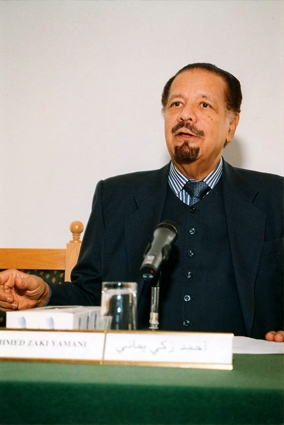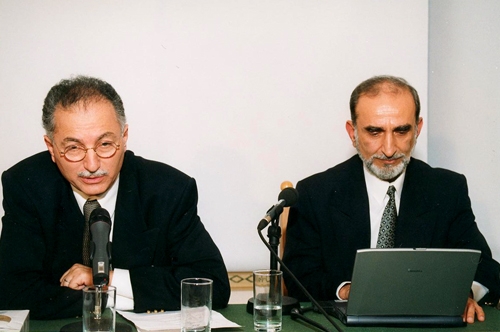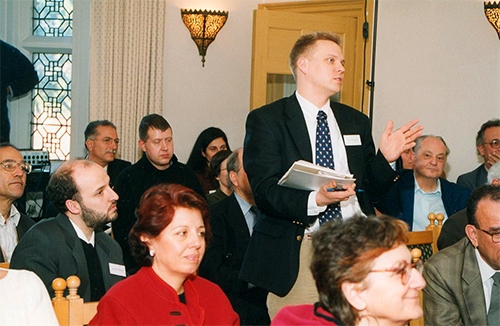Al-Furqan held a symposium on the millennial anniversary of Thabit ibn Qurrah of Harran (826 – 901 A.D.), one of the greatest scholars who established a school that played an important role in the history of the civilisation of Islam and of human civilisation in general. He was a non-Muslim whose contribution to Islamic history was acknowledged by the Abbasid Caliph of the time. Thabit ibn Qurrah translated the principal Greek books of science and mathematics into Arabic and improved on earlier translations. He wrote over 35 treatises on astronomy, mathematics, medicine and philosophy, translated many of his treatises into Latin and Hebrew, set up a scientific school that played an important role in the history of the Islamic civilisation, and founded a dynasty of distinguished scientists, which included his two sons and grandson.

The original proposal to organise such a symposium was made by Professor Roshdi Rashed, a member of the Foundation’s Board of Experts. A distinguished group of specialised researchers and interested intellectuals participated in the symposium that took place on the 2nd and 3rd of November 2001 at the Foundation’s Headquarters, Eagle House in Wimbledon, London.
His Excellency Sheikh Ahmed Zaki Yamani, Chairman of Al-Furqan, who chaired the First Panel, inaugurated the symposium by introducing Thabit ibn Qurrah and his status as a scientist, while stressing the sponsorship of science and respect for scientists which has been characteristic of Islamic civilisation. The Chairman then introduced the researchers on the panel: Professor Roshdi Rashed, who spoke on “Thabit ibn Qurrah, Mathematician and Philosopher” and Professor Abdul-Aziz Duri on “Baghdad in the Third Century of Hijrah”.
The Second Panel was chaired by Professor Annemarie Schimmel. This panel started with a paper on “The Caliphate and Scholarship in the Early Abbasid Period”, by Professor Hugh Kennedy, who provided a survey of scientific life at the time of Thabit ibn Qurrah, when the scientific institution, Bayt al-Hikmah, was prominent. Bayt al-Hikmah, where the early sciences were studied, also incorporated a library. During the reign of the Caliph al-Ma’mun, it gave special attention to the science of astrology and was a base for scientists like al-Khawarizmi and Banu Musa. According to Professor Kennedy, Thabit ibn Qurrah and his colleagues lived in a scientific community that respected the works of the ancients. They were familiar with the achievements of the Greeks, who helped encourage translations. Their reception of these sciences and ancient knowledge was, however, not uncritical and they were keen to test theories and results by means of scientific experiments.
The next speaker, Professor Dimitri Gutas went beyond the title of his paper, titled “Translations from Greek to Arabic”, by discussing not only the works translated by Thabit ibn Qurrah from Greek into Arabic, but also all ibn Qurrah’s works in Arabic and Syriac about various sciences and arts - including translations, compendia, summaries and expositions. These works exceed 150 in number. In the Third Panel, chaired by Professor Ekmeleddin Ihsanoglu, Professor Christian Houzel presented a paper on “Thabit ibn Qurrah and the Theory of Parallel Lines”.
This paper demonstrated Thabit ibn Qurrah’s familiarity with the achievements of Greek sciences regarding the theory of parallel lines. Professor Houzel highlighted ibn Qurrah’s contribution to the theory and showed his influence on later mathematicians, such as ‘Umar al-Khayyam, Ibn al-Haytham and others. The next paper was presented by Professor Philippe Abgrall on “Thabit ibn Qurrah on Conic Sections”, where he introduced Thabit ibn Qurrah’s work on conic sections and explained ibn Qurrah’s development of the work of his tutor al-Hasan ibn Musa in this field. Professor Abgrall explained how these works led to a revival of geometry, especially in the study of geometric conversions.

The third speaker on this panel, Professor Salim al-Hassani, in his lecture, titled “Bringing Life to the Machines of al-Jazari and Taqi al-Din Through Engineering Analysis and Three-Dimensional Animations”, presented three recent pieces of research on the science of levers and the devices of al-Jazari and Taqi al-Din (machines for raising water and water clocks), exploring the beginnings of these inventions, their development and the principles employed in them. The second day of this symposium started with the Fourth Panel, chaired by Professor Yusuf lbish, who introduced Professor Sinasi Gunduz and his lecture on “Society and Culture in Harran during the Time of Thabit ibn Qurrah”. Professor Gunduz spoke about Harran at the time of Thabit ibn Qurrah, when it was a cultural centre hosting a Greek community dating back to the time of Alexander the Great, which had brought with it and preserved its Hellenic heritage. Luminaries such as al-Farabi studied philosophy in the schools of Harran. It was in this environment that Thabit ibn Qurrah grew up and was educated.
The next paper in this panel was on “The Translations of Thabit ibn Qurrah in Hebrew”, by Professor Tony Levy, explaining the impact of Thabit ibn Qurrah and the Hebrew translations of his works on Jewish communities in Europe during the Middle Ages.
The Fifth Panel was chaired by Professor Roshdi Rashed, in which he presented Professor Regis Morelon and his paper on “Astronomy”. Professor Regis Morelon is a specialist in Thabit ibn Qurrah and has edited his complete works on astronomy. Through the study of a book by Thabit ibn Qurrah on the sighting of the new moons, Professor Morelon demonstrated the influence of ibn Qurrah’s works on astronomy and the path-changing impact they had on that science by making new, intimate connections between mathematical astronomy and observational astronomy.
Professor Badawi Elmabsout in his paper, titled “Thabit ibn Qurrah‘s Book on Statics [Al-Qarastoun]”, dealt with Ibn Qurrah’s book “Al-Qarastoun” on the science of engineering, which was translated into Latin. While many scholars have elucidated and commented on the Latin translation, and a German translation has been produced, its original Arabic text is yet to be edited. Professor Elmabsout based his presentation on the only two extant manuscripts of the book, one of which is in Beirut and the other in London.
The Sixth Panel was chaired by Professor Abdul-Aziz Duri, who introduced Professor Eberhard Knobloch and his paper on “The Trigonometry of Thabit ibn Qurrah in Latin”, which dealt with the translation of the works of Thabit ibn Qurrah into Latin. Professor Knobloch attributed ibn Qurrah’s fame to his book “A Treatise on the Shape of Sections”, which was well regarded by European mathematicians. It was twice translated into Latin and some chapters from the book were printed in the 16th century.

Professor Charles Burnett in his lecture on “The Astrological and Magical Works of Thabit ibn Qurrah” pointed out that the works of Thabit ibn Qurrah were known in Europe from the time of Arab Andalusia onwards, while some had been translated into Latin in the 12th century. He gave an analysis of some of these translations explaining the differences between them.
The last panel of this symposium was chaired by Professor Ekmeleddin Ihsanoglu. In this session, Professor Roshdi Rashed presented a summary of the different sessions. He welcomed the wealth of valuable contributions from participants which had characterised the symposium and the fact that each paper presented had been followed by debates and discussions.
The symposium concluded with a speech from Professor Ekmeleddin Ihsanoglu, Vice Chairman of Al-Furqan, thanking the contributors and everyone who had attended and highlighting the importance of the symposium and its achievements.

